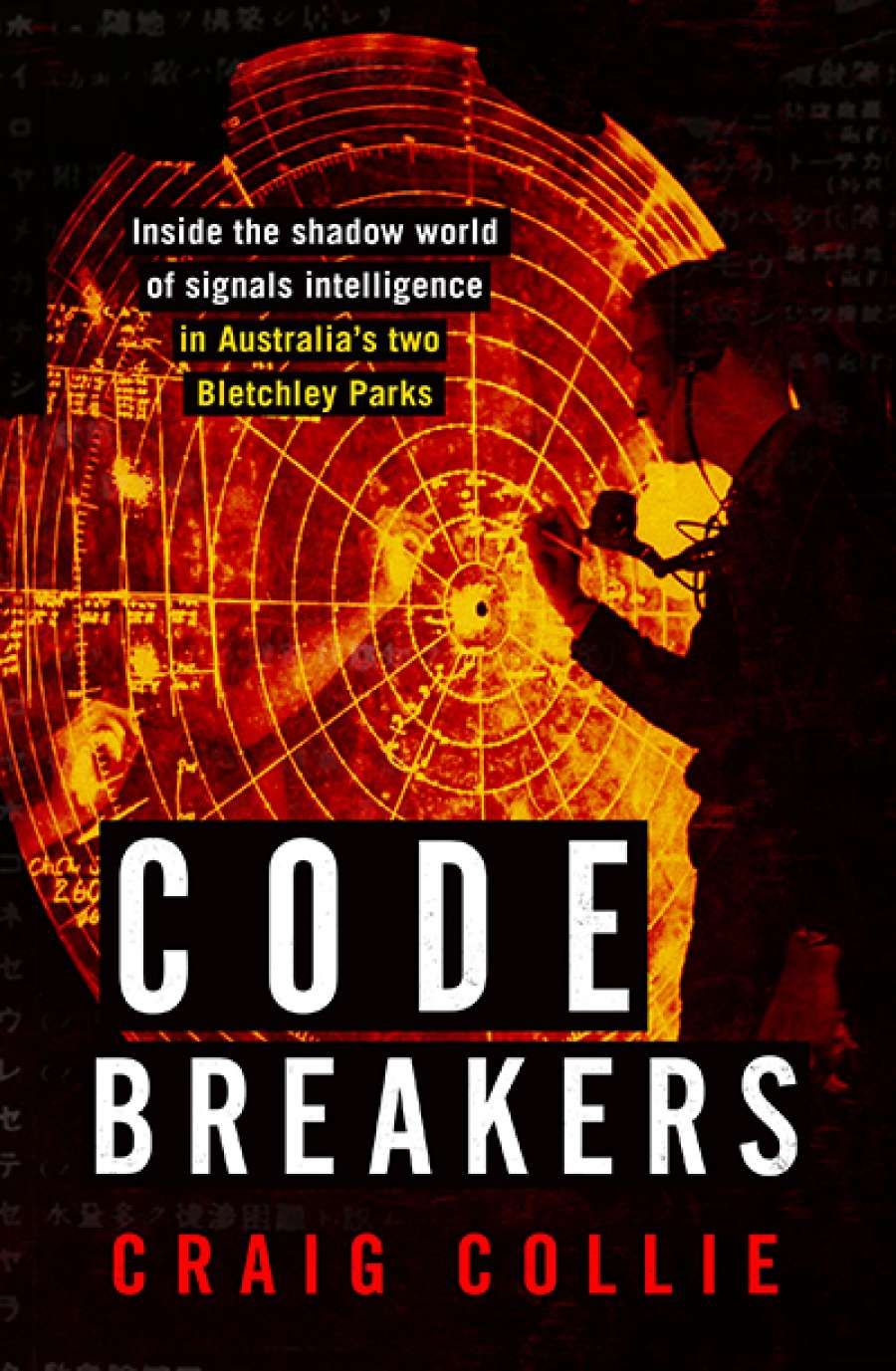
- Free Article: No
- Contents Category: Australian History
- Custom Article Title: Simon Caterson reviews 'Code Breakers: Inside the shadow world of signals intelligence in Australia’s two Bletchley Parks' by Craig Collie
- Book 1 Title: Code Breakers
- Book 1 Subtitle: Inside the shadow world of signals intelligence in Australia’s two Bletchley Parks
- Book 1 Biblio: Allen & Unwin, $32.99 pb, 389 pp, 9781743312100
Despite the Australian code breakers’ remoteness from the battlefront, their efforts, conducted jointly with the Americans, were, according to Craig Collie, just as important to signals intelligence in the Pacific War as those of the Bletchley Park team during the Battle of the Atlantic. Collie, a former television producer and SBS TV production executive, who has published three previous books on Asian aspects of wartime history, set himself a challenge with Code Breakers. The actual business of signals intelligence in itself is not dramatic: ‘The breaking of Japan’s naval codes was an arcane but tedious process requiring great patience.’ It was also an operation that required various aspects to be carried out in ignorance of the general plan so that no one knew more than they needed to.
Cryptographers applied the methods of an exact science to fragmentary and often misleading data, frequently only arriving at their solutions by a process of eliminating vast arrays of alternative explanations. If the enemy became aware that their military code had been broken, they would simply change it. Sometimes the length of time it took to crack the code meant that the solution was obsolete by the time it had been discovered.
One advantage enjoyed by the Central Bureau code breakers was the unintended consequence of the rapidity of the Japanese advance across vast distances. ‘Japan’s empire was spread so widely across the western Pacific and Southeast Asia that changes in their code were not uniform, the same message sometimes being sent in uncoded kana Morse and another in code.’ If the Japanese receiving station didn’t have access to the latest code, the message would have to be re-sent in the old one.
Collie concedes in the acknowledgements that ‘This was not an easy book to write.’ Readers with an interest in the subject will be grateful to him for pulling together all the strands. Collie laments that ‘The post-war embargo on revealing intelligence activity during the war has meant that much of the knowledge is gone. After forty years, personal accounts are prey to faulty memory and to the desire to move into the spotlight or to settle old scores’.
 'Cranleigh' in South Yarra, Melbourne (image courtesy of The RAM magazine)
'Cranleigh' in South Yarra, Melbourne (image courtesy of The RAM magazine)
Despite the dispersed and highly technical nature of the primary material, the author breathes life into many of the shadowy personalities involved and the inter-agency rivalries that operated among and between the American and Australian code breakers. At least on the American side, there was a certain competitiveness and institutional suspicion, as well as cooperation, which didn’t always sit well with the generally more laid back Australians.
Notwithstanding the intellectual sophistication and organisational challenges involved in signals intelligence, Code Breakers is mostly a story of success as the result of sheer persistence in the face of considerable odds. Although signals intelligence had predicted yet failed, due to bureaucratic unpreparedness, to prevent the attack on Pearl Harbor, a valuable early contribution was made to the Allied success in the Battle of the Coral Sea and at Midway, where the Japanese naval fleet suffered a decisive defeat.
It is worth pointing out that the Australian and American cryptographers had much greater success in cracking the Japanese codes than the Japanese had in penetrating Allied secret communications.
In an era when it seems increasingly difficult to get anything done in Australia that requires cooperative effort in the national interest, the can-do approach and industriousness of the much smaller and less well-resourced wartime generation in hindsight only grows more impressive. Apart from what it adds to our knowledge of the history of cryptography, Code Breakers convincingly provides yet another example of how Australia, despite its geography and population, contributed disproportionately to the Allied cause in World War II.


Comments powered by CComment